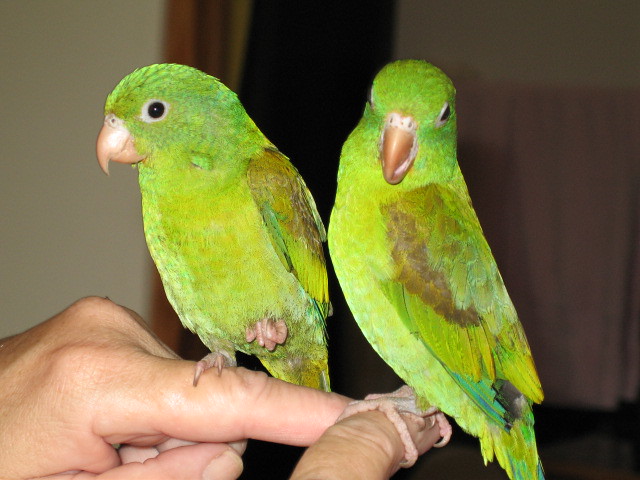 |
| Photo by Young in Panama |
Parakeets also called budgies, require the proper cage. Make sure it's a cage designed for small birds, with narrow gaps between the cage bars. Get the largest cage you can afford - it should have enough space for your parakeet to open his wings fully. The cage should have a swing, and at least two perches. Attach a cuttlebone to the side of the cage so your parakeet can keep his beak trim.
Make sure the cage has a pullout bottom drawer so you can easily keep the floor clean. Place newspapers or bird paper down on the bottom to absorb the droppings. You can sometimes find parakeet cages with a grated floor above the bottom of the cage - this will keep your parakeet off the dirty bottom.
Position the cage off the floor in a draft-free area. If you're concerned about drafts, cover the sides or parts of the cage with towels to be on the safe side.
Parakeet Feeding
Give your parakeet fresh food and water daily. Buy a good seed mixture designed for parakeets and supplement their diet with vitamin drops and bird gravel (available in most pet stores). Whenever opening their cage, use caution and make sure all the doors and windows are closed - because a parakeet can escape in a flash. Also make sure no household predators are around (dogs, cats, etc.).
Parakeet Handling
Parakeets frighten easily, so try to avoid any noisy or sudden movements towards them. Take your time and be gentle whenever you're around them, this will gradually gain their trust. You should immediately begin the process of getting them used to you and your hand. You can do this by placing your hand in their cage and leaving it there for 5 - 10 minutes, as often as you can. While your hand is in their cage, sing and talk soothingly to your parakeet and this will help establish a bond of trust. After a period of time, you'll be able to place your forefinger under your budgie's chest and he'll hop right on your finger and stay there for longer and longer periods of time.
Parakeet Exercise
To stay healthy, a parakeet needs exercise - and this means flight. You should let your parakeet out of his cage to fly every day. Start out slowly, because a bird that's been caged for a long time will be very weak in the beginning and have problems flying. Take his cage into a small room, such as a bathroom, and open the door to his cage. He'll eventually get out and try to fly. There will be some crashes and frustration, but in a small room such as a bathroom, you won't have to worry about him getting stuck behind a bookcase. After a week or so, he should be in flight--shape and then you can begin letting him out to fly in larger rooms.
Parakeet Health Care
Parakeets are susceptible to a variety of diseases, but the most common and potentially fatal is diarrhea. Keep an eye on her stools - they should be round and solid. If they are consistently runny, then she could have diarrhea. Think about any changes you might have made to your parakeet. Have you given her table food? Many table foods can be harmful to a parakeet and give them diarrhea, even seemingly harmless foods such as iceberg lettuce. Stick to seed and treats designed for parakeets and go to the pet store or call your veterinarian for an anti-diarrhea medicine designed for parakeets.
Good parakeet care doesn't have to be complicated. Just take the time to give him attention and care on a daily basis. And it's a good idea to invest in a good parakeet or budgie care handbook.
|

No comments:
Post a Comment